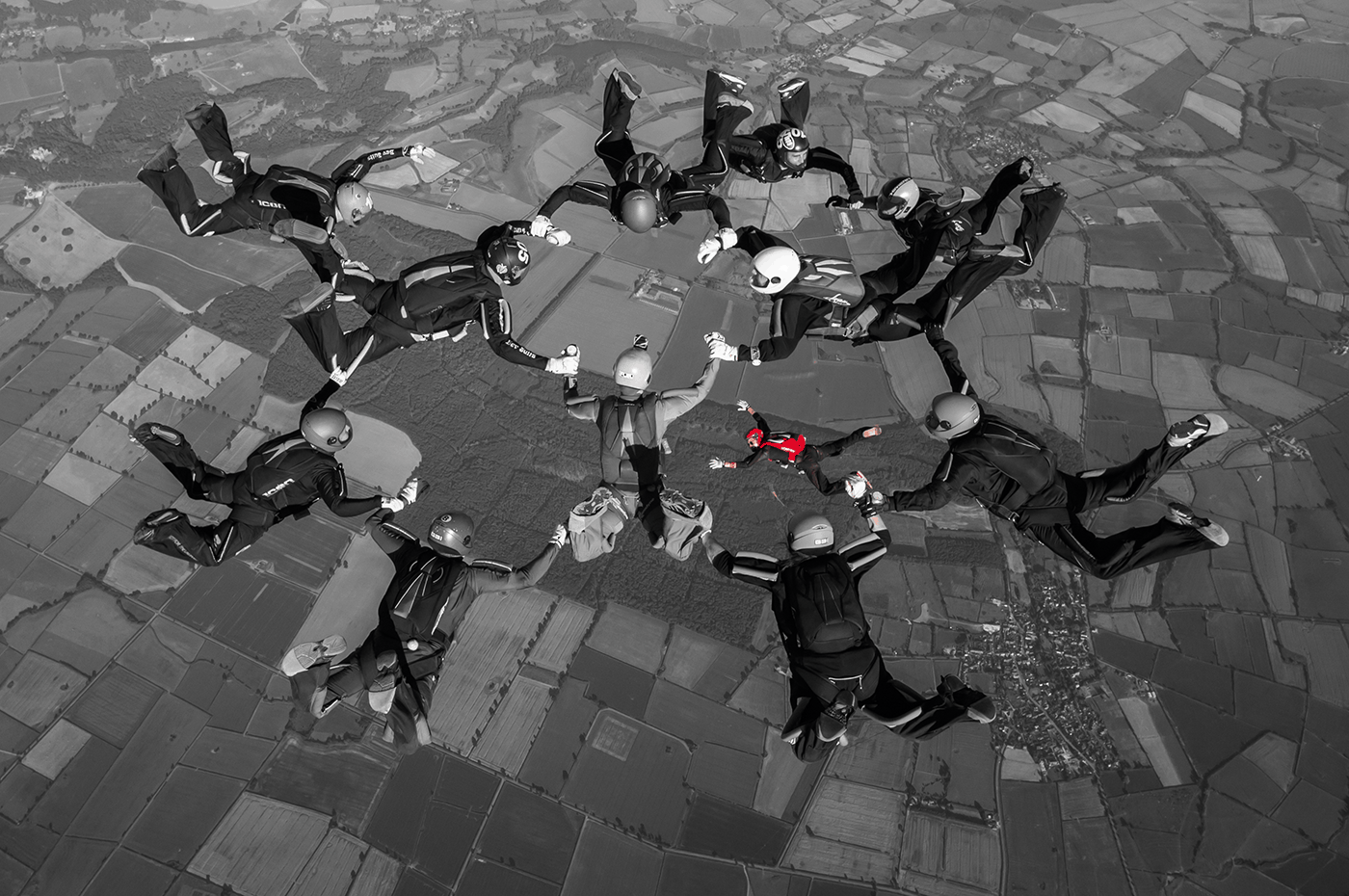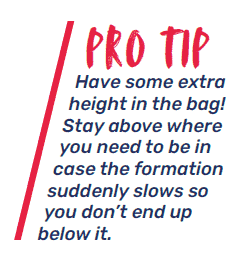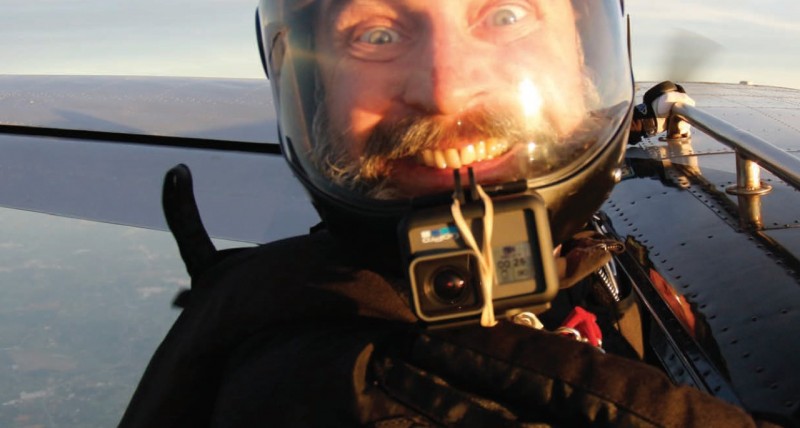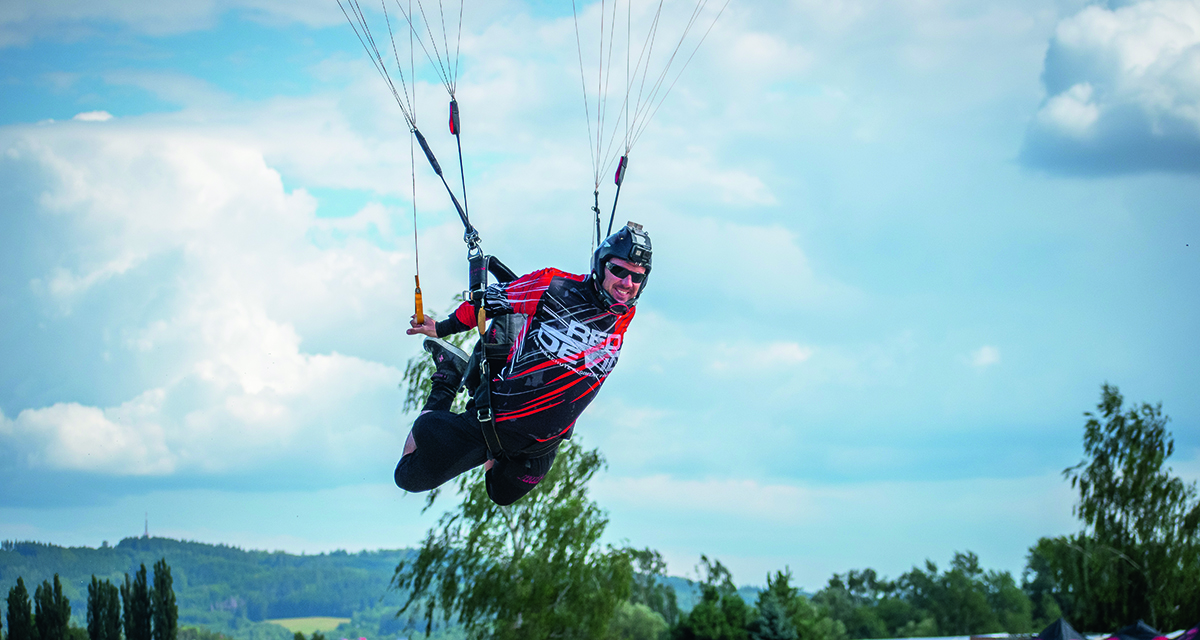World record breaker Matt Cumming offers his expert tips on how to avoid going low.
It is often said that there are two types of skydivers: those who have gone low, and those who will! If you do a lot of formation skydiving, it will probably happen at some point, but what is ‘going low’ and how can we avoid it? In short, being ‘low’ is when we end up underneath the formation, or underneath the line of our ideal stadium approach. We should always approach the formation from above and on our own radial as shown in the illustration on page 50. If you end up in the red area, something has gone wrong! Going low can ruin a jump, can be dangerous (especially if you go hurtling past on your dive approach) and can result in sketchy break-offs – so clearly it’s something we want to avoid!
Diving past it
When diving to a formation, there is a risk that you will dive past it. After exiting the plane – present to the air, identify where the formation is, and then get going. You absolutely must know where you are going! I’ve often heard in debriefs “When I came out of my dive, I looked for the formation and realised I’d already gone too far”.
You may think you can dive faster by going steeper and not looking but it’s really important to maintain visuals to have a good approach and avoid collisions. Expect the unexpected! You cannot assume the formation will be where it was on the last jump or that everyone else is approaching correctly. This is even more relevant on multi-plane formations where the trail plane’s position relative to the lead can vary significantly from jump to jump.
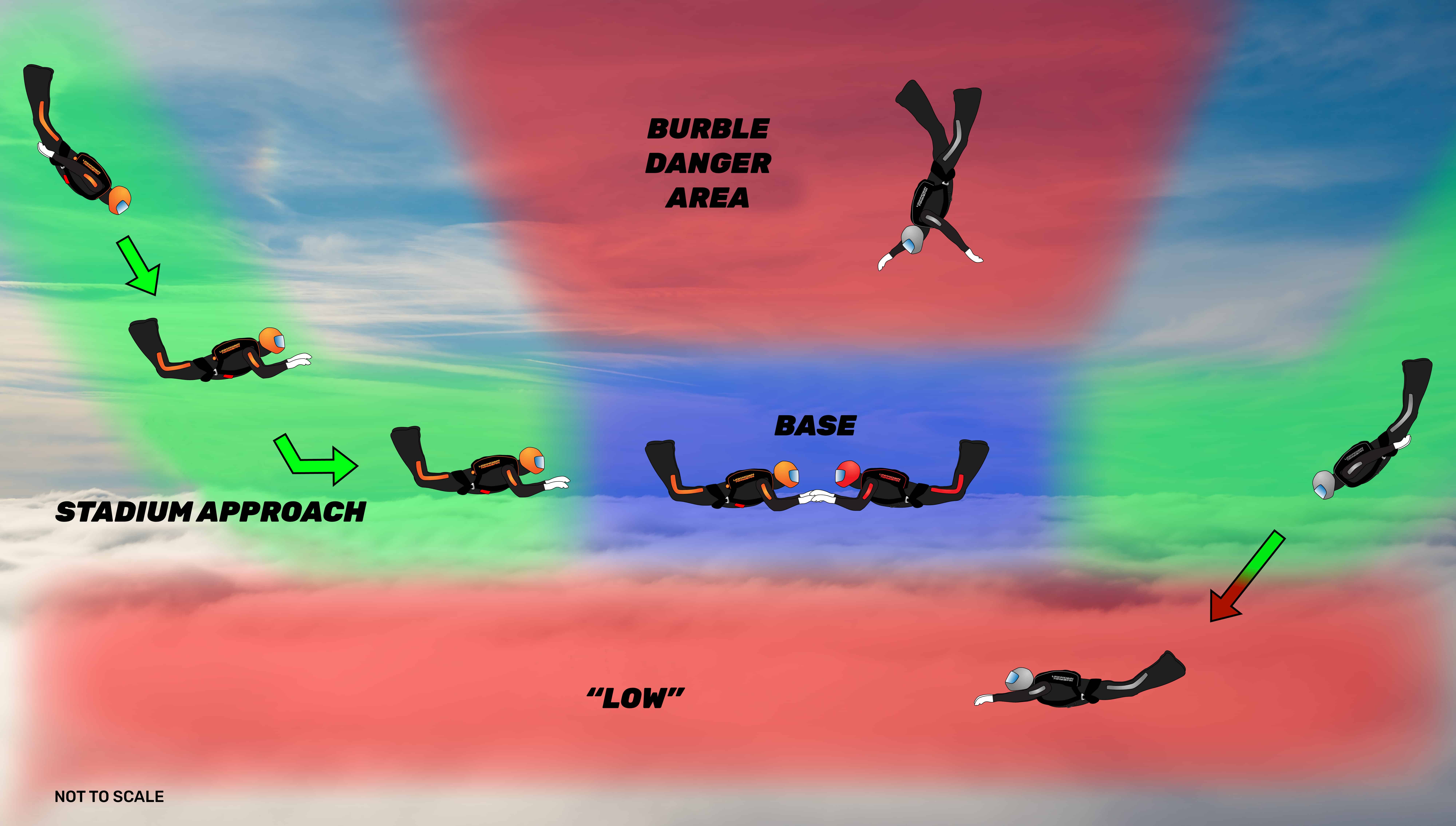
From the first attempt at swoop to pin, I teach students to be completely “stopped”, i.e. matching my speed, from a good distance back and to then approach with a fast fall and a forwards movement. At that stage there’s little harm in stopping early, assessing where you are, and diving again if required. Coming out of the dive early gives you a chance to assess the speed of the formation and how much you need to put the brakes on. Beware though, you can put yourself at risk by flying an unexpected approach on bigger group jumps. If you come out of your dive too early for no apparent reason, the diver behind may be following too closely and not be ready to dodge you!
Different aircraft and wind speeds create big differences in the angle at which you need to dive to the formation. In an extreme example, a hot air balloon dive would be straight down whereas from planes you must also cover the horizontal distance the plane has travelled between the base leaving and your own exit. As such, you will pick up a lot of horizontal speed as well as vertical during your dive. If you now approach the formation and go into a perfect neutral slow fall position to slow down, this will reduce your vertical speed but will do nothing for your horizontal approach speed. If you stick your legs out to catch more air to slow down, you’ll actually add forward speed and could end up in the dangerous burble zone like our skydiver in the illustration overleaf! Everyone is a different size and shape with different fall rates and stopping distances; it takes practice to work out the inputs you need for your perfect approach.
Going Low Once You’re There
The dive isn’t the only time during the jump where you can go low. Formations will slow down as they build, with more grips catching more air. It might suddenly slow down to a speed you can’t match so it’s a good idea to always have some ‘height insurance’ and be a little above where you want to get to, just in case. Some formations are ‘floatier’ than others too – diamonds, for example, are notoriously slow falling. Have a look around in the dirt dive at where you are in the formation and establish if the fall rate is likely to feel slow for you. The base may consider wearing lead to speed up and help those on the outside. Others may consider trying slower falling jump suits (or wearing t-shirts or sleeves over their suits) to add some extra drag.
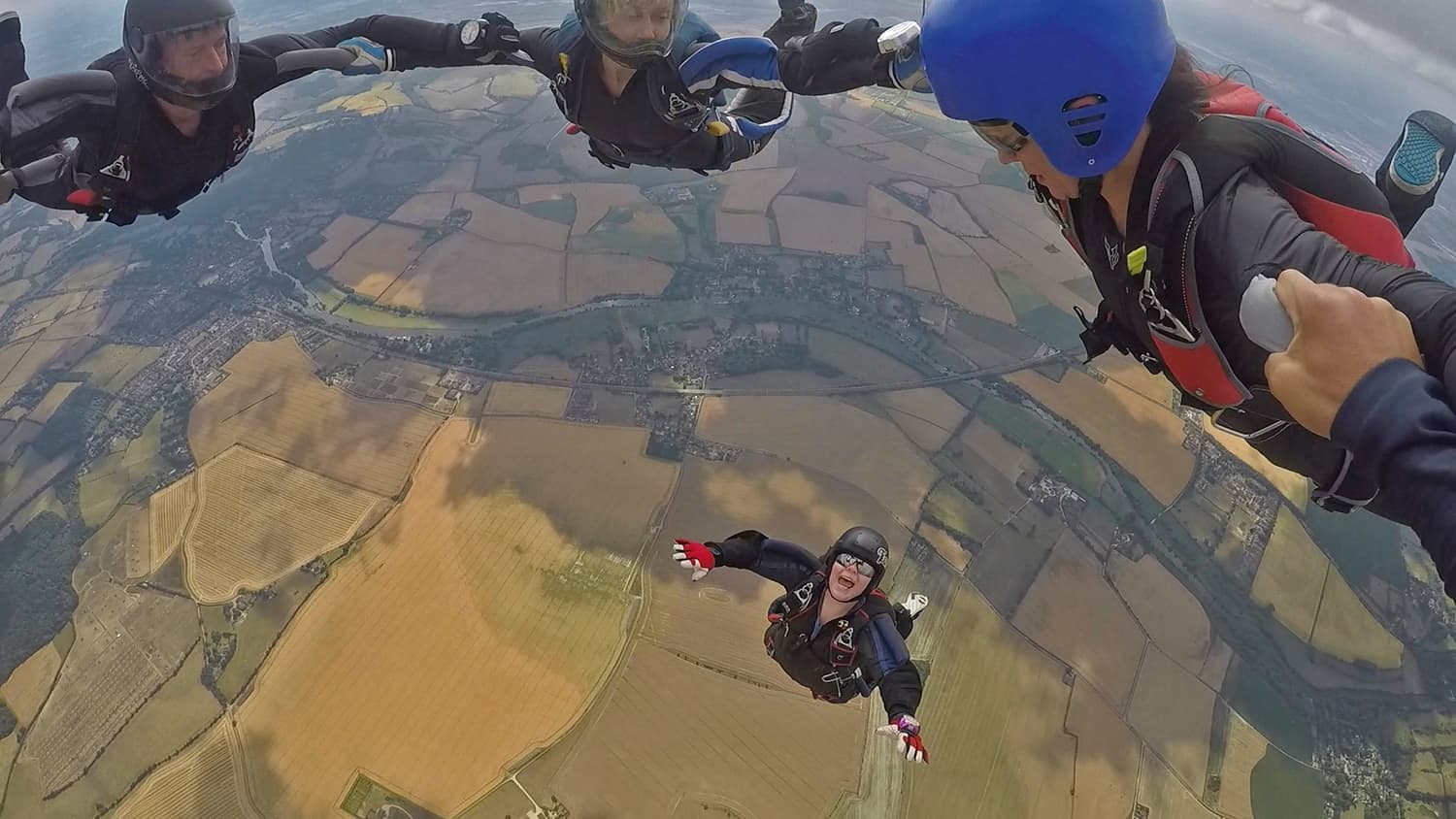
Really big formations can be very slow by the time the last person docks. Everyone already in the formation needs to be flying their slot well and it is important to remember that you might need some extra lead on for once you are part of the formation, even if it makes your approach more challenging. Once you’ve docked you will be helping to keep the speed up and the formation strong – you don’t want to be slowing it down for those docking after you. Everyone should dress for success – and success is about the whole group, not just you!
Given formations fall slower once grips are taken, so you might get caught out between points. If everyone lets go and people start re-building before you, the formation will ‘pop up’ before you’ve had a chance to react. Again, it’s a good idea to have some height insurance and to anticipate this happening before it does and you suddenly find yourself low. The worst problem here is that the tendency is to look up to see where everyone has gone but that just makes you arch more, exacerbating the issue! You might think you’ve got your arms out in a slow fall position, but the slow fall effect is mainly produced from a flat body position and arching will make you sink out, fast!

Inadvertent Fast Fall
An ideal slow fall position should be nice and flat, legs out, arms out and crucially, looking up sideways at the formation. This lets you keep visuals on the formation and slow fall safely, and out to the side, without ending up directly underneath the formation (which would cause far more problems than you did by going low!)
If someone does end up underneath you on the approach you can be ‘burbled’ and lose your air. This can result in you suddenly dropping and ending up low yourself. If everyone flies an ideal stadium approach this should be avoided, but the reality of big formations is that people will take slightly different angles and you might be unlucky.
The key here is to ‘make your own luck’ by paying attention in the dirt dive to who you are likely to see near you. If they are missing during the jump, you know that they might be about to appear somewhere unexpectedly!
Avoiding being burbled is the best solution here but if you do end up low as a result of this, the same rules apply: get out to the side and slow fall back up before re-approaching.
Not Actually Low
As an aside, people often get confused when performing a rear float exit for the first time and think they have gone low. This is somewhat of an optical illusion as you are still flying on the hill. You are literally lower in terms of altitude, but in terms of the relative air you want to be going mainly forwards.
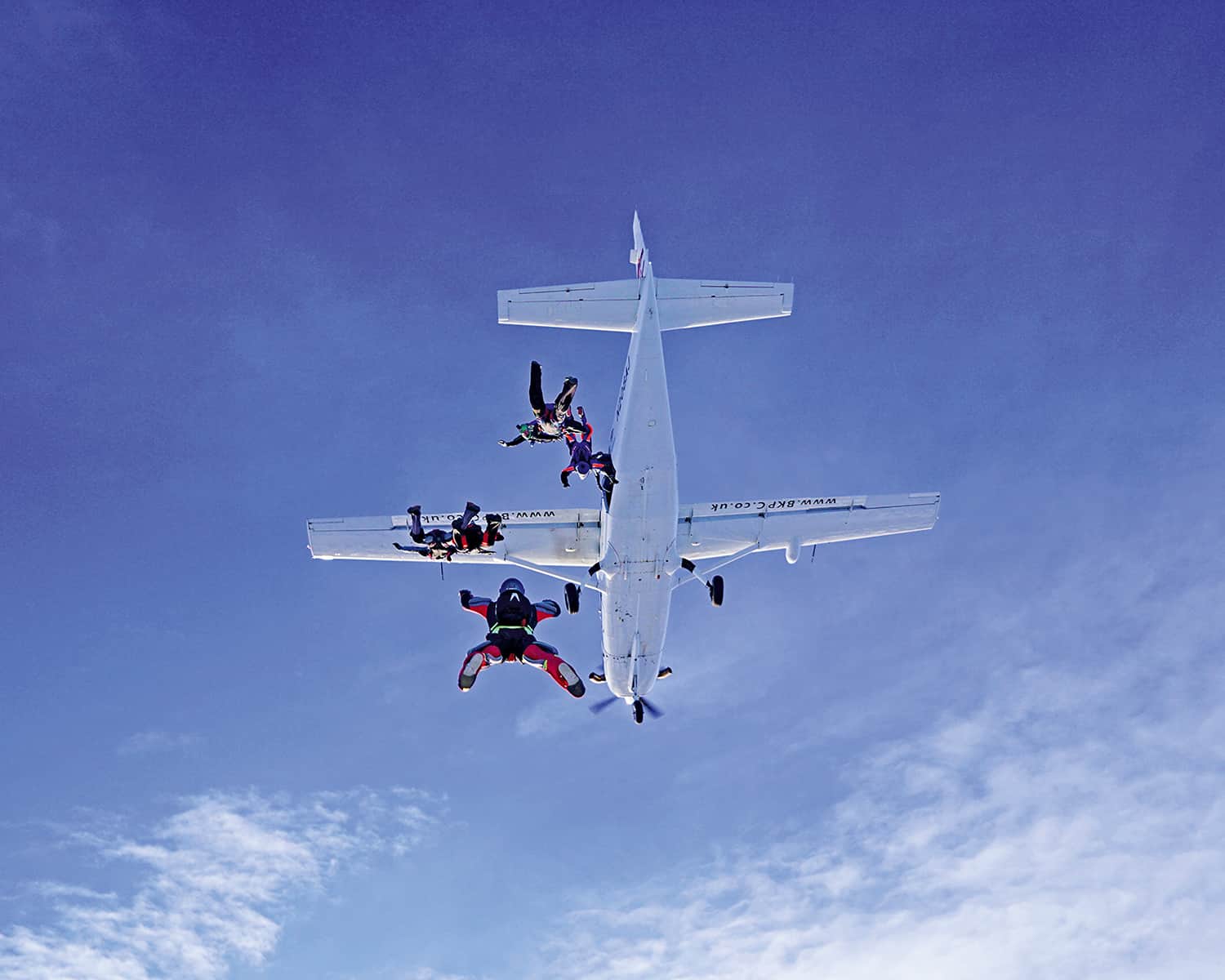
In the photo above, if the floater nearest the camera does nothing but straighten their legs to move forwards, they will likely end up above the formation and possibly in the burble zone. ‘Legs out and arch’ is required here – there is no need to slow fall to make it to the others.
 By Matt Cumming – Pajama Pumas 4-way Skydiving Team
By Matt Cumming – Pajama Pumas 4-way Skydiving Team
Matt Cumming is an international formation skydiving competitor, National Champion and world record holder. He is available for coaching at Skydive Langar and at Twinwoods Adventure’s tunnel in Bedford. You can also check out the new Social Distance Learning area of the British Skydiving website for his recent Big-way Beginners webinar, as well as lots of other new resources..
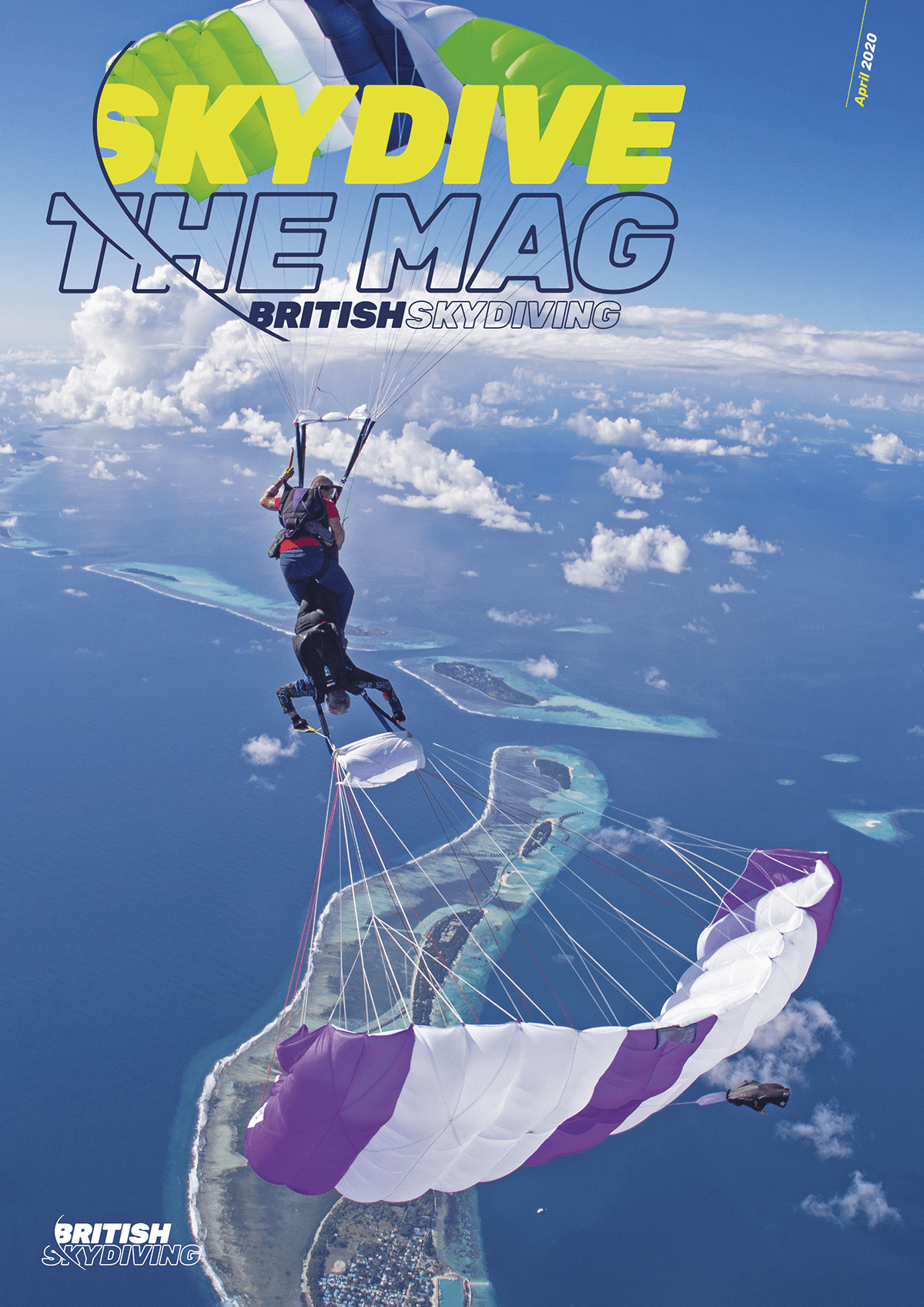 First published in the June 2020 issue of Skydive the Mag.
First published in the June 2020 issue of Skydive the Mag.
Photography
Main Image & Stadium Approach Graphic by Pete Harries
Floater On The Hill by Paul Rimmington
Matt Cumming by Rob Lloyd


